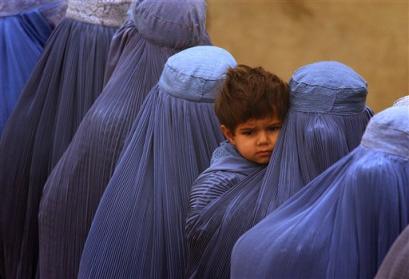Triumph of Buglee and Hanif–A Story of Hindu woman in Muslim homes & Muslim men in service of society!
By: Rajbir Deswal
HINDU-MUSLIM relations in pre-Independence India did have a streak of estrangement but largely both sides tolerated each other and adapted themselves to certain practices. Before Partition, some jobs that were exclusively performed by Muslims in north India included plying transport and selling bangles. Of course, embroidered kurtas tailored by Musalman darjees are remembered till date for their sartorial finesse.

Since vending bangles and making the women wear them with a touch of hands were two different things; and because the vendors were Muslims, some orthodox Hindu families of the Jorian Kuan Mohulla of Karnal in those days, brought a Hindu couple trading in bangles from Bijnore in U.P.
The couple was given a small house to live in and the Hindus took good care of them. The woman-vendor’s name was Buglee. She became equally famous with parda-nasheen women in the Muslim households. Transcending all biases and prejudices, she found her clientele inside the zenanas — women’s chambers — in Muslim houses. It seems the problem was not that some Muslim or Hindu touched the women while making them wear bangles, on both sides of the social spectrum but that, a male hand should best be kept at a distance.
World War II there was an acute shortage of petroleum products. Petrol and diesel consuming engines were replaced with those run on gas. The adapted system was fixed to the rear of a vehicle with an oven for which coal was used.
Old-timers recall the Muslim drivers and conductors’ names such as Hanif, Abdulla, Mushtaq or Saleem. A driver could be heard calling out to the conductor (cleaner in those days) saying, “Abey Hanif, zara sariya to maar” which meant that the latter shook the ash-laden coal in the oven by an iron-rod for providing an increased amount of gas, enabling faster speed. The fare from Karnal to Delhi was eight annas.
Public transport, particularly the buses, had three rows of berths not the way they have it these days. It was a T-shaped arrangement. People sat face to face with each other, which caused embarrassment in case of women who largely, came from traditional backgrounds. Here again the exchange of glances needed to be strictly taken care of.
Also if you had to look out of the window for a long time, it would cause discomfort. To take care of the “class”-travellers, there were four to five seats available just behind that of the driver. The charges were, of course, a bit more. Those who could afford these seats for their women, got them.
If the driver knew your plans of travel, he would take care to pick you up even if you were located slightly off-route. But there were occasions when people cursed the transporters if a trip was cancelled due to there being insufficient number of passengers for a bus. Badmouthing of the Muslim transporters in abusive terms was a routine affair.
Adaptation is the rule. After all, fuel engines replaced with those run on gas worked well for Muslims ferrying all and sundry to and from their destinations despite being despised, as Buglee imported by Hindus was able to find her relevance even for Muslim households.
Whatever was there in the minds of men who inhabited this country before Partition and whatever were the reasons of the minds being plagued by vested interests, the Buglees and Hanifs are still remembered by those who were their contemporaries. And quite fondly!



